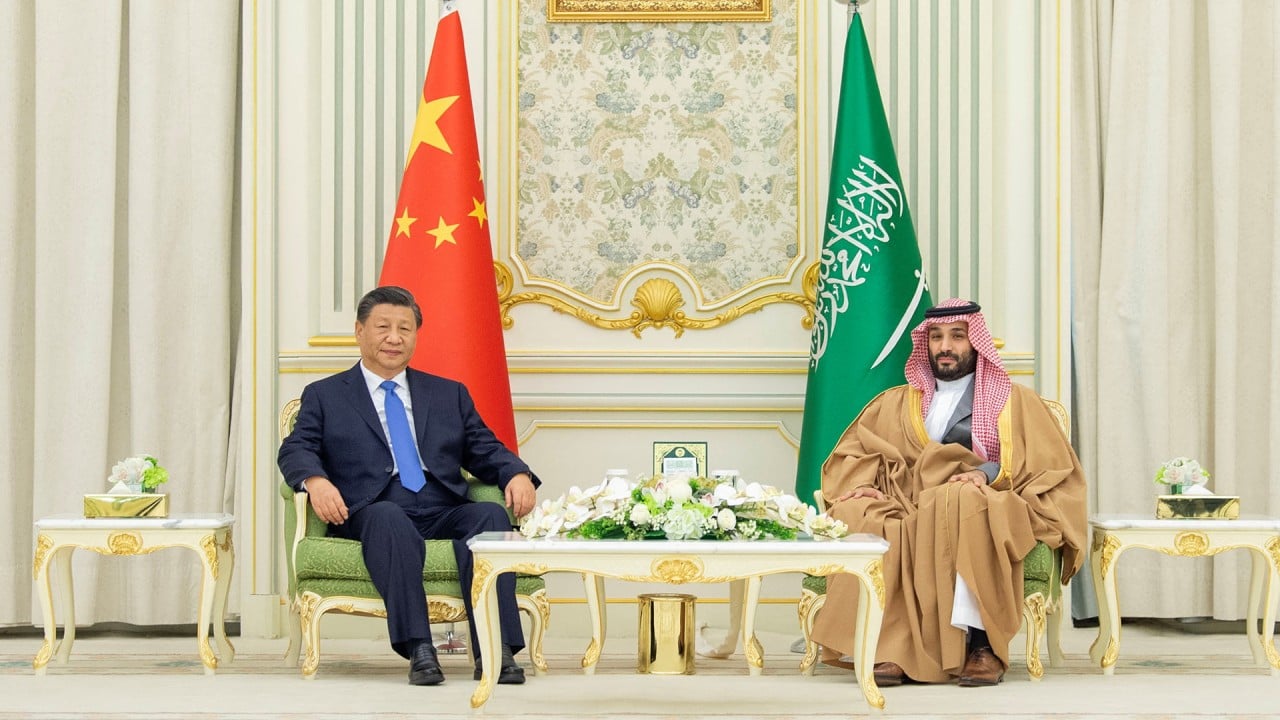
Why Blinken’s Saudi Arabia trip was really a ‘message for China’ as well as US allies in Middle East
- Secretary of State Antony Blinken visited Riyadh as Iranian embassy reopened following China-brokered peace deal
- ‘Alarm’ over China’s growing influence in the Middle East is driving US push to reiterate commitment to Gulf and Arab partners, analysts say
US Secretary of State Antony Blinken met senior Saudi officials last week during a two-day trip that coincided with the reopening of the Iranian embassy in Riyadh after seven years, the result of a China-brokered peace deal in March.
Jodie Wen, a postdoctoral fellow specialising in Middle East studies and a China Forum expert at Tsinghua University’s Centre for International Security and Strategy, said the timing was “interesting”.
“This is both a message for China [from the US] and a pledge to its allies … that you should not think we are leaving the region because China is here,” Wen said.
“This is very delicate timing,” she said, adding that the US had been “alarmed” about the Saudi-Iran peace deal from the beginning, on concerns that its influence in the region would be further diminished.
“I think a very important reason for Blinken to choose to visit Saudi Arabia at this time is because of the rapprochement between Iran and Saudi Arabia,” she said.

According to Gedaliah Afterman, head of the Asia policy programme at the Abba Eban Institute for Diplomacy and Foreign Relations at Israel’s Reichman University, the resumption of Saudi-Iran diplomatic ties had made the US realise it should become more active in the region, especially with Riyadh.
“Saudi Arabia is becoming a central and more independent player on several issues that are of strategic importance to the United States. Oil prices, the Iran nuclear issue, normalisation with Israel and not least China’s growing presence and influence in the Middle East,” he said.
That independent line was apparent a day before Blinken’s trip, when Saudi Arabia announced it would cut oil production by an additional one million barrels a day from next month, compounding two other reductions since October, despite concerns from the US.
Riyadh hosted the first summits between China and Gulf and Arab states in December. It also took the opportunity to boost bilateral ties with Beijing, with dozens of deals signed in various sectors.
Blinken was the second top US official to visit Riyadh within a month. White House national security adviser Jake Sullivan visited in early May and proposed a massive infrastructure plan to connect Gulf and Arab states with India, through a network of ports and railways covering America’s partners in the Middle East.
The ambitious proposal, which came out of discussions by the I2U2 Group – a coalition of the US, the United Arab Emirates, India and Israel set up in 2021 – has been likened to China’s belt and road strategy and widely interpreted as a US move to counter China’s influence in the region.
Afterman said the US appeared to be pursuing “a new regional strategy using economic diplomacy”, to draw Middle Eastern and Asian countries closer together with regional groupings such as the I2U2 as it tries to offer an alternative to Chinese initiatives like the belt and road.
“Amid ongoing concerns from its regional allies, the US is working to demonstrate that its pivot to Asia will not come at the expense of its partners in the Middle East,” he said.
“The US understands that China has been effective in its strategy of combining economic cooperation and political engagement to advance its regional interests, and in response is now trying to develop a more economic-focused and less confrontational approach that could resonate better with US partners in the Gulf.”
Saudi Arabia and the UAE were invited to the meeting with Sullivan but have so far remained silent on the US plan. Both are participants in China’s belt and road strategy.
Can China’s Middle East role extend to Israeli-Palestinian settlement?
Wen said Blinken could have further pushed forward the I2U2 alliance during his trip.
“The quadrilateral mechanism of I2U2 is now being promoted by the United States with great efforts,” she said.
“This is a mechanism led by the Biden administration. I think after Biden came to power, his strategy has been obvious. Through establishing this kind of small and multilateral mechanism in various regions … the Asia-Pacific, the Indo-Pacific, and the Middle East – to curb China’s influence in all aspects.”

 - Kawala Xie.jpg?itok=NogZcyZ-&v=1661304068)
